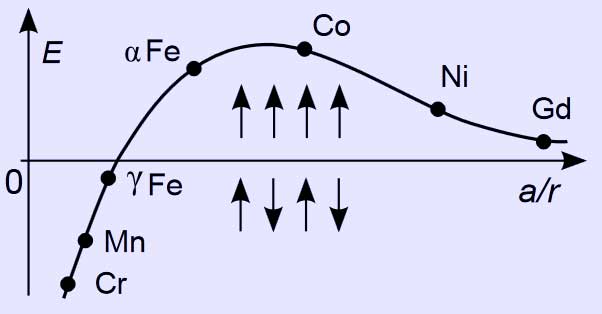.
Bethe-Slater curve
Bethe-Slater curve is a graphical representation of exchange energy for transition metals as a function of the ratio of the interatomic distance a to the radius r of the 3d electron shell.[1]

Bethe-Slater curve: elements above the horizontal axis are ferromagnetic, below the axis are antiferromagnetic
The curve illustrates why certain metals are ferromagnetic and other antiferromagnetic.
For a pair of atoms, the exchange interaction \( wij_{ij} \) (responsible for the energy E) is calculated as[2]:
\( w_{ij}= - 2 \cdot J \cdot S_i \cdot S_j \)
where: J - exchange integral, S - electron spins,i and j - indices of the two atoms.
References
^ http://www.nitt.edu/home/academics/departments/physics/faculty/lecturers/justin/students/magnetic/exchange/
^ Soshin Chikazumi, Physics of Ferromagnetism, Oxford University Press, New York, 1997, page 125, ISBN 0-19-851776-9
Retrieved from "http://en.wikipedia.org/"
All text is available under the terms of the GNU Free Documentation License

